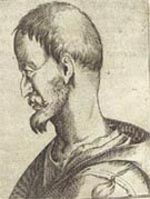|
Paul White
Darwin's emotions and the problem of expression
This paper explores the implications of Darwin's work on emotional expression for the tradition of physiognomy in the 19th century. In his 1872 book, The Expression of the Emotions in Man and Animals, Darwin argued that the outward manifestations of emotions were vestiges of previously serviceable habits, acquired by our animal ancestors. Darwin's work on emotional expression drew heavily upon physiologists such as Charles Bell, who had criticized Lavater and other physiognomists for their neglect of the body's internal movements, the hidden registers of feeling and character beneathe the skin. In focussing on the nervous physiology and animal ancestry of emotion, Darwin turned the problem of expression inward and, as it were, backward in time—what did emotions do for the organism? Where did they come from? In the course of making this argument, Darwin seems to empty emotional expressions of any meaningful content, and to sever the relationship between facial features and individual character. In this paper, I will examine this curious feature of Darwin’s work by addressing the question, what do emotions express?
Les émotions de Darwin et le problème de l’expression.
Cette communication explore les implications du travail de Darwin sur l’expression des émotions, sur la tradition de la physiognomonie propre au XIX e siècle. Dans son livre de 1872, L’Expression des émotions chez l’Homme et les animaux, Darwin avance l’argument selon lequel les manifestations extérieures des émotions seraient les vestiges d’habitudes utiles en des temps bien antérieurs et qui auraient caractérisé nos ancêtres. Le travail de Darwin sur les expressions des émotions s’appuie en grande partie sur des travaux de physiologistes tels Charles Bell, qui avait reproché à Lavater et à d’autres physiognomonistes d’avoir négligé les mouvements corporels internes, autrement dit les strates cachées au-dessous de la peau des sentiments et des traits de caractère. En concentrant son attention sur la physiologie nerveuse et la constitution animale regardées du point de vue des formes émotionnelles, Darwin retourne le problème de l’expression de ses indices extérieurs vers ses manifestations internes et, en fait, il cherche la solution dans l’étude des premiers temps de l’humanité. Les questions qu’il pose peuvent être formulées ainsi : qu’ont fait les émotions pour les organismes ? d’où venaient ces émotions ? Dans le processus qui le conduit à tâcher de répondre à ces interrogations, Darwin semble vider, à mesure qu’il les étudie, les émotions de leur contenu signifiant, et rompre la relation entre les traits du visage et les caractères individuels. Dans ma communication, j’examinerai ce fait curieux du travail de Darwin, en posant la question : qu’expriment, alors, les émotions ?
Go back to Physiognony from Lavater to the Great War |
|
|
|



